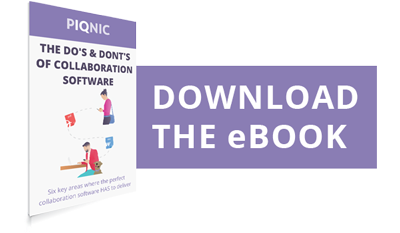We all know the power of information and that whoever uses it wisely is the winner. So why have we become so bad at managing it?
An IDC white paper from 2001 noted that knowledge workers were spending two and a half hours a day searching for information, documents and files. A 2018 IDC study found that "data professionals are losing 50% of their time every week" — 30% searching for, governing and preparing data plus 20% duplicating work. Why is this still happening?

Hunting for documents hampers workflow
Information critical to their roles is not a hand, and knowledge workers are spending half their time searching for, and in most cases not finding the information they need. They may then spend the other half recreating what has been lost. Information Management
Instead of being able to instantly find that single piece of information no matter what it is, we end up rummaging around and if you’re lucky you might find it. And, even if you do, it’s more often than not the wrong version. Not very smart.
Even if you’re disciplined with folder structures that might work for you, others may not be. So there will always be missing files and incorrect versions. But there’s much larger problems brewing, creating a perfect storm of misinformation. We’re talking information management in single-purpose cloud apps.
The chaos of apps
Let’s start with cloud file sharing, the multi-billion-dollar industry born because we couldn’t send large files through email. This is yet another folder structure where files go to die. One of our customers used four different file sharing apps and found that some of their information was actually being stored on their supplier's app. Not ideal.
Now let’s throw a few communication and messaging apps into the mix, each team often using different ones for the same purpose. Instant communication in business is a good thing, but we need to stop sharing files and information this way because they get lost deep in threads no matter how clever the app is. The other issue with external communication apps is how data is stored and how we manage it as a business record and asset. The short answer is we don’t.
Then there are productivity tools like task and project management apps. Another silo where information is stored but not managed. It slowly and surely gets buried or lost while it remains isolated from people outside of the app.
Finally, we can add in all the business apps which you can attach a document or file as a record. So it’s no wonder we waste almost an entire workday, every week hunting for information.
 Try this exercise: Count all the places you look for information - Email, local drive, shared drives, cloud storage, messages and file-sharing apps. How many are there? Now add in all the apps you use for communication where documents and files can hide. See the problem?
Try this exercise: Count all the places you look for information - Email, local drive, shared drives, cloud storage, messages and file-sharing apps. How many are there? Now add in all the apps you use for communication where documents and files can hide. See the problem?
The emergence of single-purpose cloud apps has completely ignored document management. That’s because it’s a completely different skill set and it’s not sexy enough. How slack of them. It goes without saying that information is very important so it needs consideration. It’s no longer good enough to create yet another unmanaged folder-based silo or worse yet, attach important files in communication apps.
How to control information
If you want to work smarter and have better control of your information, then you need to look at these two problem areas:
- Information storage in unmanaged shared drives using old fashioned folder structures.
- Single-purpose apps, used for work where valuable information is involved.
You’d think this problem would have been easily solved with information management tools like document and content management solutions, but this industry has a major identity crisis. It can’t even agree on what to call itself. It’s also riddled with complexity, is overly expensive to purchase and maintain, hard to set up and not at all user friendly.
But the biggest mistake they’ve made is not evolving to newer ways of working, ignoring the natural pattern of how people actually need and want to work with information. They’re still living in the search and retrieval space. No wonder users ignore them.
And then, there's PIQNIC
We think document management should be an inbuilt function of what we do, not an isolated application. It should be integrated into our work and should help us instead of hindering us.
If you want to take back control of your information, it needs to be a part of how we work and needs to be included in productivity tools like file sharing, messaging, task management, project management, social and team collaboration.
We need to shift our thinking away from finding information based on where it is, to what it is. We then need to make sure every piece of information that is created, discussed, shared, collaborated and consumed using new ways of working is properly managed.


What's your experience of working in this area? Let us know in the comments below: